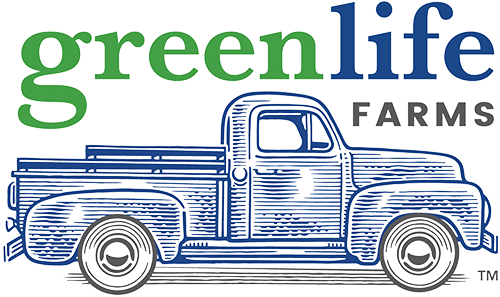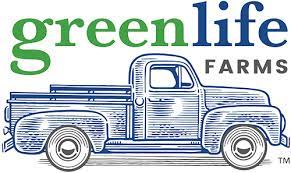Title Page
-
Site conducted
-
Conducted on
-
Prepared by
Personal Hygiene
-
Team members are dressed appropriately: clean clothes in good condition. Clothes do not have rhinestones, glitter and are not excessively baggy
-
Jewelry standards are followed: earring and necklaces should not be long or interfere with the food/their work. Food handlers do not have jewelry from the elbows down (plain wedding band is the exception).
-
Good health: employees are not allowed to work when diagnosed with Salmonella typhi/non-typhi, Shigella, shiga toxin producing E.Coli, Hepatitis A or the Norovirus. The same applies to their common symptons: Vomiting, Diarrhea, fever with a sore throat, jaundice and open wounds with pus.
-
Drinks are only allowed from close able containers. They must be stored in a designated area. No food.
-
No smoking on the property, anywhere.
-
Bandages: only blue metal detectable bandages are allowed to be worn. Bandages must be covered (hands-gloves, forearms-plastic wrap or longsleaves)
-
No Bare Hand Contact, although uncut produce's packaging recommends to wash, gloves are worn when handling. But if an employee chooses not to wear gloves, we have a policy and procedure in place so that bare hand contact is also compliant with current FDA regulations.
-
No nails gel/acrylic/shellac, nail polish or excessively broken/dirty nails
-
Hair is restrained: hat or hair net. If your hair touches your shoulders it must be further restrained. Beards must be covered with beard guards if longer than 1/4"
-
Hands are washed as required: when starting work or returning from break, the outside, drinking. When changing tasks and areas. When hands are no longer clean: touching chemicals, picking items off the floor, touching the trash can, touching yourself/others, sneazing, putting on hair restraint. Situations vary and are not limited to the examples.
-
Handsinks are properly maintained in good condition, clean, assessible and only for hands
-
Gloves are in good condition, when in poor condition discard.
Temperature Control
-
Potentially hazardous food is handled purposefully when in the danger zone. Food is not left out of temperature control unless currently being worked with.
-
Accurate Thetmometers available. Thermometers are calibrated to 32°F +/-2.
-
Potentially hazardous food must be cooled down to 40°F within 4 hours or discarded.
-
Potentially Harardous Food must be maintained below 40°F.
Food Integrity
-
Foods/F U E.L.S. are not contaminated. Free from physical, microbiological or chemical contaminants.
-
Food is in good condition: rotting, discolored, slimy, milky, unnatural/foul odor, broken/holes in leaves, shows signs of pests.
-
Foods/F.U.E.L.S. are not commingled with/under chemicals and cleaning tools. Under dripping condensation/frost. (location does not have raw food). Not near areas with chipping paint or other circumstantial physical contaminants.
-
Food/F.U.E.L.S. are stored appropriately: not on the ground, 6" off ground, atleast 5' away from electrocution traps, away from possible spatter.
-
Food is in good quality: beyond safety- would you purchase this product? Is it visually appealing/size/color/natural?
-
Food is within date: the farm marks lettuce that is whole head or unbroken leaves for 18 quality days.
-
Labeled: foods and food items are labeled with a common name if contents is not obvious.
Equipment
-
Food contact surfaces are clean. When in continuous use with PHF's they must be washed/rinsed/sanitized every 4 hours.
-
In good condition: no textures, cracks(spiderweb cracks are OK (not gradient or texture at crack) but will soon need to be replaced). Anything that holds debris/color(uncleanable).
-
Clean items are protected. Flipped food contact side down if not covered.
-
Single Service items are discarded when in poor condition or are no longer clean.
Facility
-
Inspect windows/doors (doors in greenhouse, doors/window seeding, storage room doors, harvesting glass panes, lobby doors) for cracks, damage, and gaps and any other defects.
-
Check lights (seeding room, offices, storage areas, bathrooms, main lobby) for any broken covers, bad bulbs, or defective lights. Replace as needed.
-
Check lights in Greenhouse for any broken or bad bulbs/defective lights. Replace as needed.
-
Floors/Walls/Ceilings in poor condition. Smooth, non-absorbant material that is cleanable. Concrete is sealed, no raw woof, chipping paint, cracked, not damaged, excessively sloped when water can not drain.
-
Floors/Walls/Ceilings are clean. No mold, dust, debris, spiderwebs.
-
No animals.
-
Lights are shielded, enclosed or shatter proof if not LED
-
Ventilation and fan guards are maintained clean/good condition.
-
No pests: look for droppings, rub marks, gnawing, odors, nests, check traps/glue boards.
-
Pests management system: no fly swatters, fly tape cannot be over cleanareas, traps are in good condition. Sevice is received monthly/or more frequently as needed.
-
Harborage/entry: doors are closed when not in use. 1/4" light gaps(preferable none), no gaps in and out of equipment/building. Wet Mops hung, cleaning utensils not on floor.
-
Backflow prevention: plumbing has air gaps, vacuum breakers, hose and hose bibs, faucets/hoses/sprayers not hang under flood line.
-
Potable water is available.
-
No gas leaks, flammable items stored in designated cabinet.
-
Dumpsters are closed, in good condition, drain plug and no base
-
Trash cans are lined and clean both inside and outside.
-
Pesticides/herbicides are stored alone in designated cabinet in cage
Cleaning
-
Cleaning towels are in hand or solution when wet. When finished thrown away or laundered
-
Wash, rinse, sanitize. Wash with soap or other cleaner that is approved for food contact surfaces. rinse. Soak in sanitizer for 1 minute and allow to air dry.
-
All chemicals present are acknowledged in sds book.
-
Working container all have common name labels and are limited to specified areas in dept.
-
Bulk chemicals stay in cage stored on chemical spill dunnage racks. (exception bulk containers that are directly hooked to dispensers)
-
Physical grounds maintained to prevent pest highways.
-
No sponges, sos pads or cloth towels that are not disposable or have a washing routine.
-
Cleaning tools follow Color coding, or stored in specified area in dept.
Daily Recap Notes
-
Items that may not directly affect food safety but are worth bring to teams attention.







